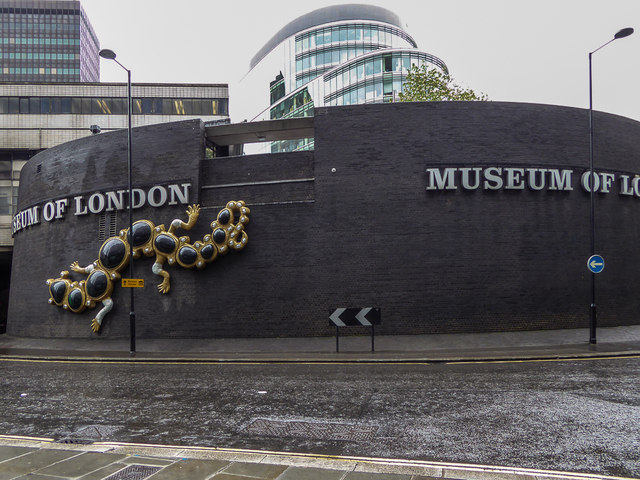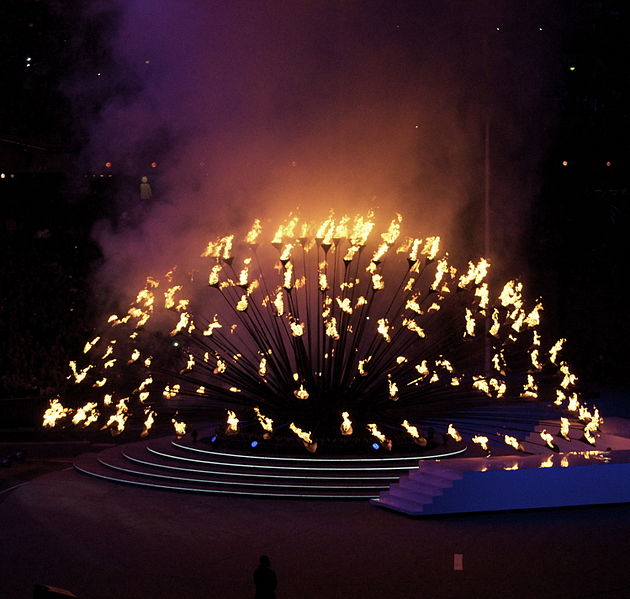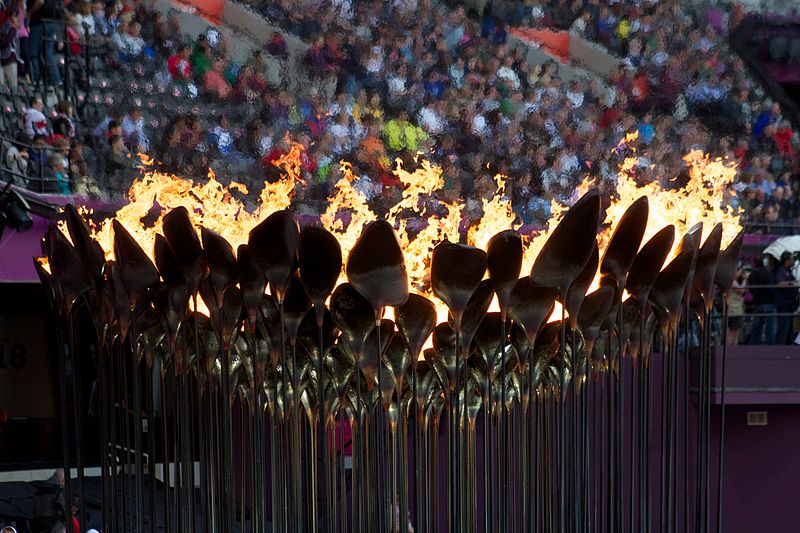Museum of London
From Londonhua WIKI
Museum of London
 | |
| The Corner of London Wall and Aldersgate | |
|---|---|
| Credit: | Copyright Christine Matthews and licensed for reuse under this Creative Commons Licence |
Overview
The Museum of London explores the history of London and its surrounding areas from prehistoric times up through to the present. The Museum of London has received multiple awards for its work over the years, including the 2012 European Museum of the Year award[1].
Contents
The Exhibits at the Museum of London
London Before London
This exhibit details the time period when humans first arrived in the area today known as London about 450,000 B.C. to the arrival of the Romans in 50 A.D. The exhibit describes the people living here as nomadic hunters and gatherers. It also goes into detail describing the landscape and inhabiting animals as being very different than it is today. Many glass cases house the bones of different animals that had inhabited the area. The museum also has a fair display of tools, weapons, and human remains that are from the time period. One emphasis of the exhibit details the transition from the bronze age to the stone age. [2]
Roman London
Medieval London
War, Plague & Fire
This exhibit focuses on the time period between 1550-1660, which is described as one of the most "turbulent" periods of the city's history. The exhibit shows how London had started to become divided, where some people were more concerned with art and Shakespeare's plays and others were evangelical Puritans who wanted to get rid of Shakespeare's theaters all together. The history of the Civil War in London is on display in this gallery and the plague that occurred in 1655, which killed more than 7000 people per week, can also be found here in this gallery. The section of the exhibit that is dedicated to the Great Fire of London is currently under renovation, but there is an interesting short video about the fire. To learn more about this exhibit click here.
Expanding City
The Victorian Walk
The Victorian Walk is an exhibit at the Museum of London that takes you through the streets during the Victorian Era in London. The walk brings you past multiple different streets with shops lined up along each side of the street. There is music playing in the background that replays the sounds from walking through the busy streets. To learn more about the Victorian Walk exhibit, click here.
People's City
World City
After World War II, London was not as strong a city as it once was. Population was in decline and The British Empire had lost its colonies. Along with these factors the London youth and the multicultural community staged revolutions. These revolutions were brought on by the absorption of new values and claimed to have new rights. By the end of the 20th century London's identity was as diverse as its people. To learn more about the World City click here.
The Lord Major's Coach
The London 2012 Cauldron
This exhibit features the Olympic Cauldron used in the 2012 London Olympic Games. The exhibit shows how the Cauldron was designed, built, and put to use. At the center of the exhibit is the cauldron itself, shown in both half-open and closed positions[3].
The Cauldron was designed by Thomas Heatherwick and made by Heatherwick Studio under deep secrecy, not being revealed to the public until Opening Ceremonies. The secret of the Cauldron's design was kept so secret that it was codenamed Betty, and designers in the studio were never allowed to have more than one small section of the Cauldron up on their screens at once, reducing the risk that anyone watching might figure out what the entire project was. Before the Games, the Cauldron was secretly tested in the Olympic Stadium in the middle of the night[4]. Each petal was custom made and not two are the same, with the construction of a single one taking two days. The graceful design has since been described as "one of the most original in the history of the Games[5].
References
- ↑ Awards. (n.d.). Retrieved May 15, 2017, from https://www.museumoflondon.org.uk/about-us/our-organisation/awards
- ↑ Pisano, S. (Ed.). (2016). Museum of London: Museum Highlights . London: Scala Arts & Heritage.
- ↑ The London 2012 Cauldron. (n.d.). Retrieved May 15, 2017, from https://www.museumoflondon.org.uk/museum-london/permanent-galleries/london-2012-cauldron
- ↑ The London 2012 Cauldron. (n.d.). Retrieved May 15, 2017, from https://www.museumoflondon.org.uk/museum-london/permanent-galleries/london-2012-cauldron
- ↑ Wainwright, O. (2014, July 23). Row over Olympic cauldron design settled out of court. The Guardian. Retrieved May 15, 2017, from https://www.theguardian.com/artanddesign/2014/jul/23/locog-settle-with-atopia-over-olympic-cauldron-opening-ceremony
External Links
If appropriate, add an external links section
Image Gallery
If appropriate, add an image gallery

